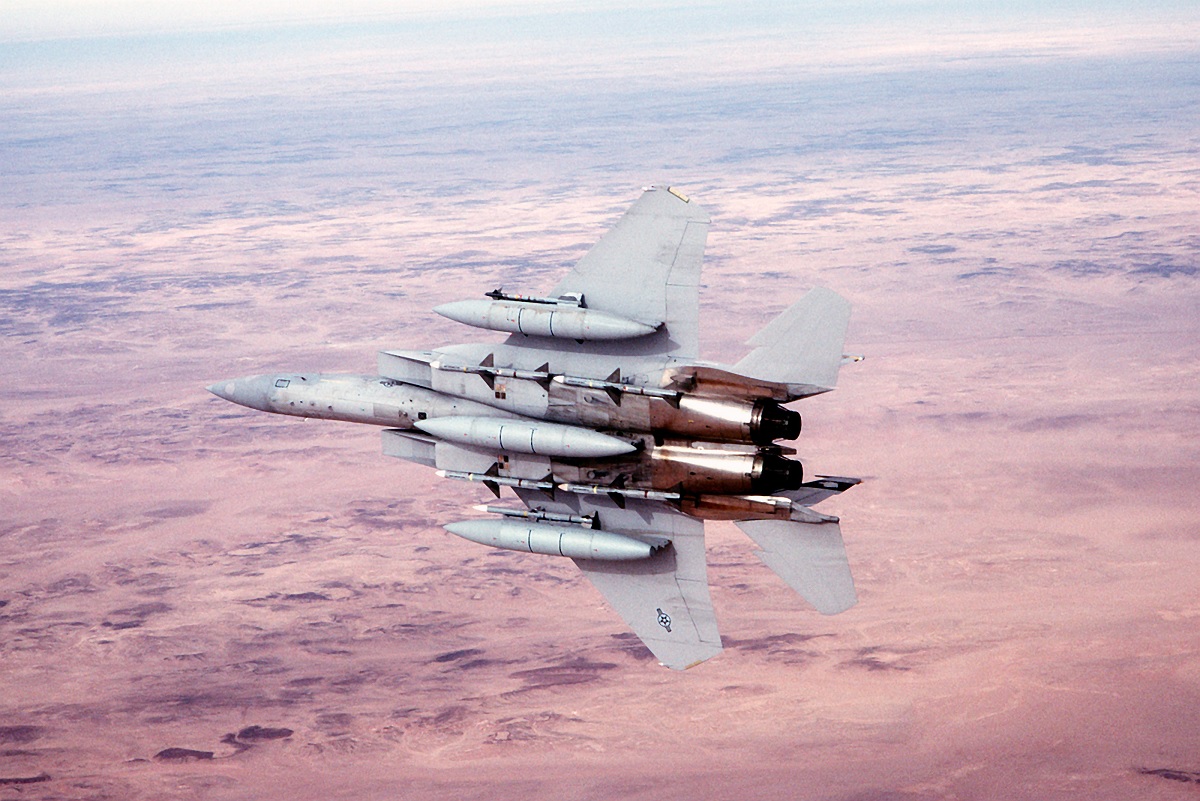“Some Eagle pilots mockingly suggested we should paint our aircraft like submarines: ‘Just think: That brief hesitation as he thinks What’s that submarine doing up there?’,” Robert “Scout” Winebrenner, former F-15C pilot
The McDonnell Douglas (now Boeing) F/A-18 Hornet, designed as an all-weather fighter and attack aircraft, swiftly established itself as the core of the air forces of the United States Navy and Marine Corps. It is proudly flown by the U.S. Navy’s Blue Angels Flight Demonstration Squadron. For seven foreign customers, including Canada, Australia, Finland, Kuwait, Malaysia, Spain, and Switzerland, the Hornet serves as the aircraft strike force.
Noteworthy Compared to standard F/A-18As, Royal Canadian Air Force (RCAF) CF-18s have a few unique features, such as a bright identification spotlight integrated into the port fuselage immediately ahead of the cockpit, a distinctive ejection seat, and a fake cockpit shape painted on the underside.
The U.S. Air Force (USAF) F-15 pilots of the units stationed in Europe who, during the Cold War, conducted much dissimilar air combat training (DACT) missions against the Canadian Hornets based at Baden-Soellingen in what was then West Germany, thought the latter was a great idea.
In fact, the mock cockpit may initially leave the opponent in confusion, rendering him unable to determine whether the aircraft is turning toward or away from him. Several Eagle pilots made the insulting suggestion that we paint our planes to look like submarines: ‘Just think: That brief hesitation as he thinks What’s that submarine doing up there?’ may be all the advantage you need!” says the former F-15C pilot Robert “Scout” Winebrenner in Issue 23 “McDonnell Douglas F/A-18A/B/C/D Hornet” of Aviation Classics magazine.
When Winebrenner was assigned to the 32nd Tactical Fighter Squadron in Soesterberg, the Netherlands, he witnessed the Canadian Hornets in action. Winebrenner took part in a sortie in his F-15C along with a CF-18 being piloted by a Canadian Captain by the name of Greg “Claw” Morris while serving in the same deployment as a Tactical Leadership Programme (TLP) instructor.
As Scout recalls “After checking the applicable national regulations, we determined that it was not allowed to fly dissimilar close formation. But there were no prohibitions on different tactical formations. So we found the best weather on Low Fly Area (LFA) 7 in southern Germany and briefed up a low altitude VFR ingress through France at a slower speed to save fuel, intercepts on target of opportunity in LFA7, and a high altitude recovery to individual instrument approaches at Florennes.”

As they arrived at LFA7, a number of aircraft were already present, and the F-15C and CF-18 engaged in a number of combat missions against Neuburg Phantoms, Memmingen Tornados, along with some F-16s.
Scout and Claw got along great and the two planes were quite compatible, but Winebrenner realized that while everyone could see his F-15, no one could see Claw’s CF-18. Invariably, during the final part of the intercept, the targets of the intercept would respond and turn into the US F-15, searching for the “second Eagle,” leaving Claw with more close-range belly Sidewinder shots than he probably wanted to take.
Similar circumstances occurred as two CF-18s pitched up and turned toward Winebrenner’s Eagle, leaving Morris just behind them. However, Claw swiftly informed his buddies to check their six, as Scout remembers: “Hey, what are YOU doing back there? I’m with the F-15! Fox 2 on both of you!”

Even now, Winebrenner still considers that mission to be one of his best ones flown in LFA7, but there is another distinctive quality that causes him to consider the Hornet, as he explains: “After 26 years in the air force, I retired in 2005. Now my only exposure to the Hornet is watching the US Navy Blue Angels practice over my home in Pensacola. I did note disappointedly that they don’t have the fake canopy.”
Photo by Cpl. Manuela Berger / Royal Canadian Air Force and U.S. Air Force

